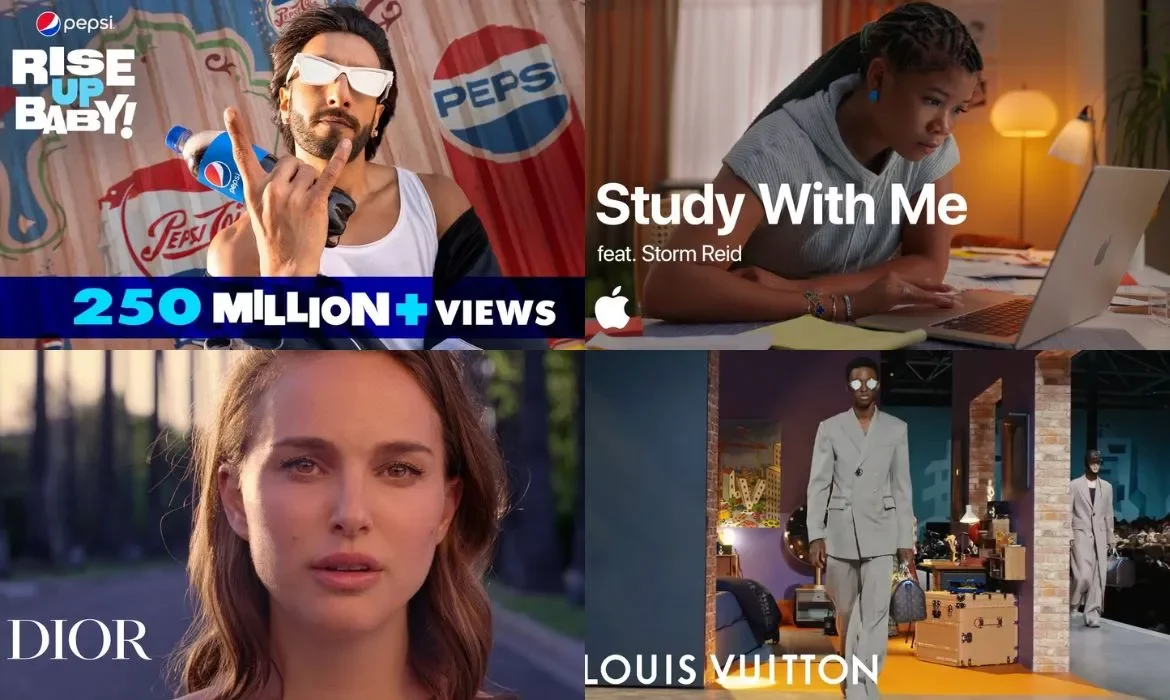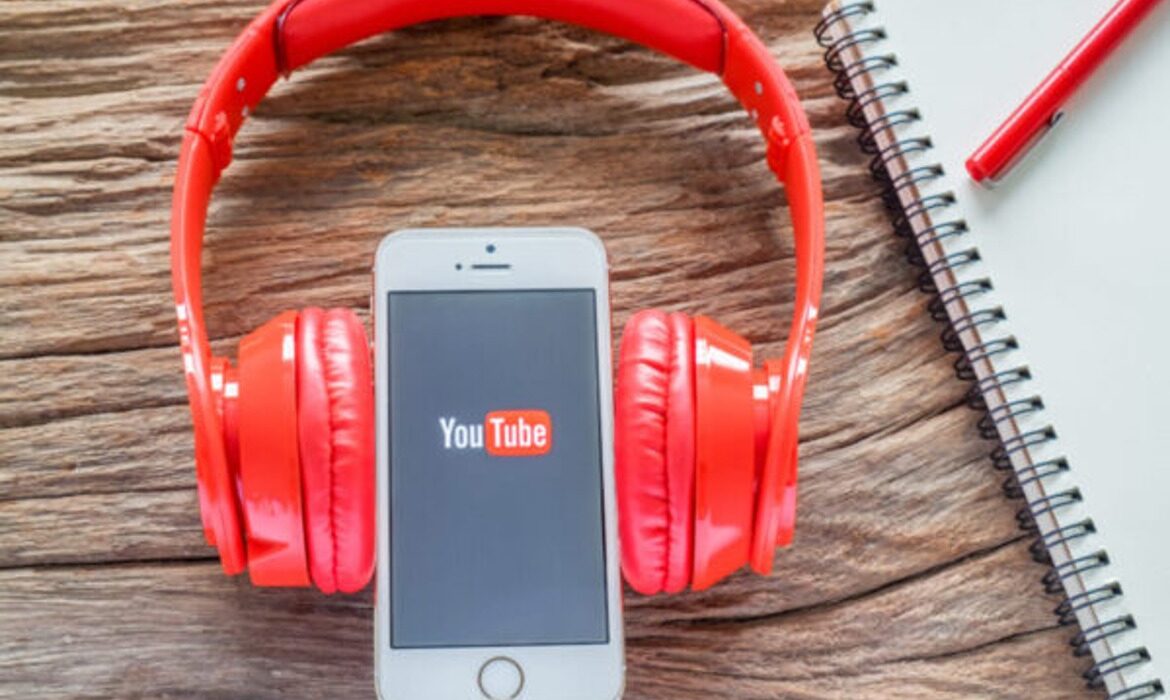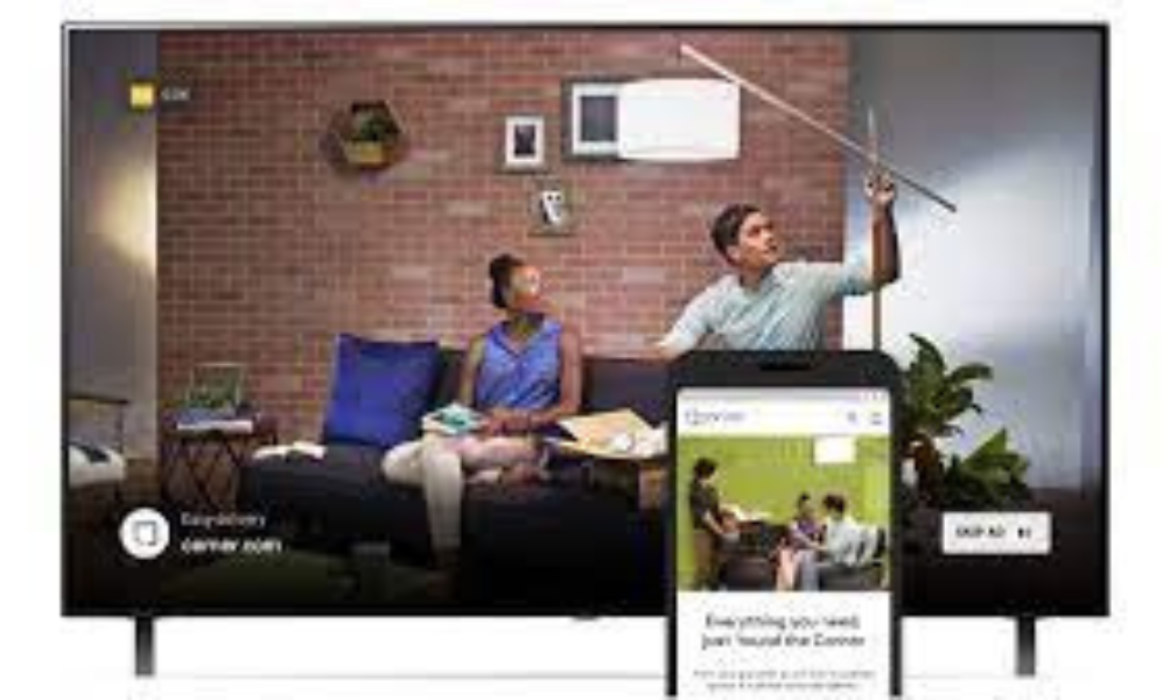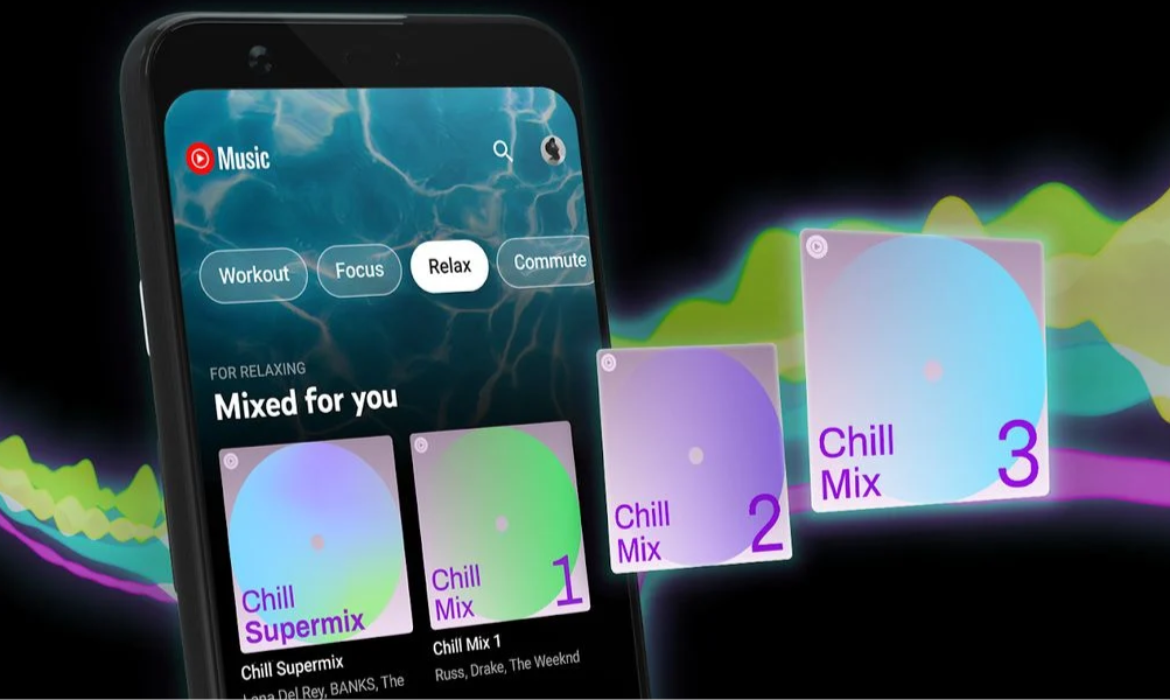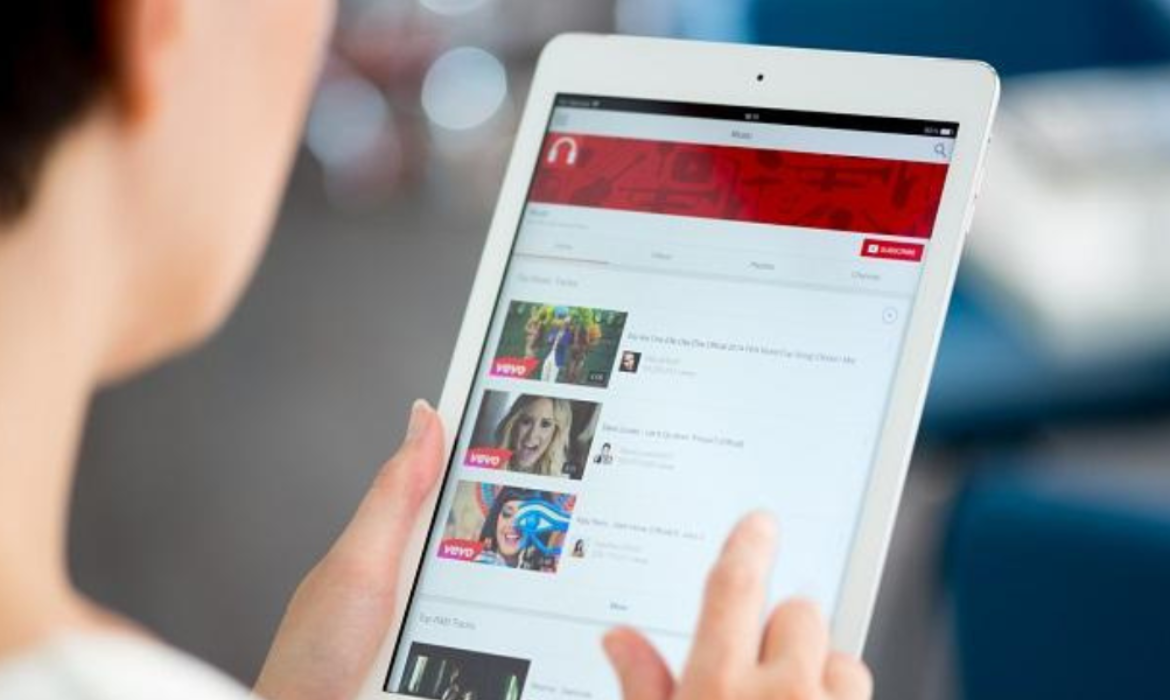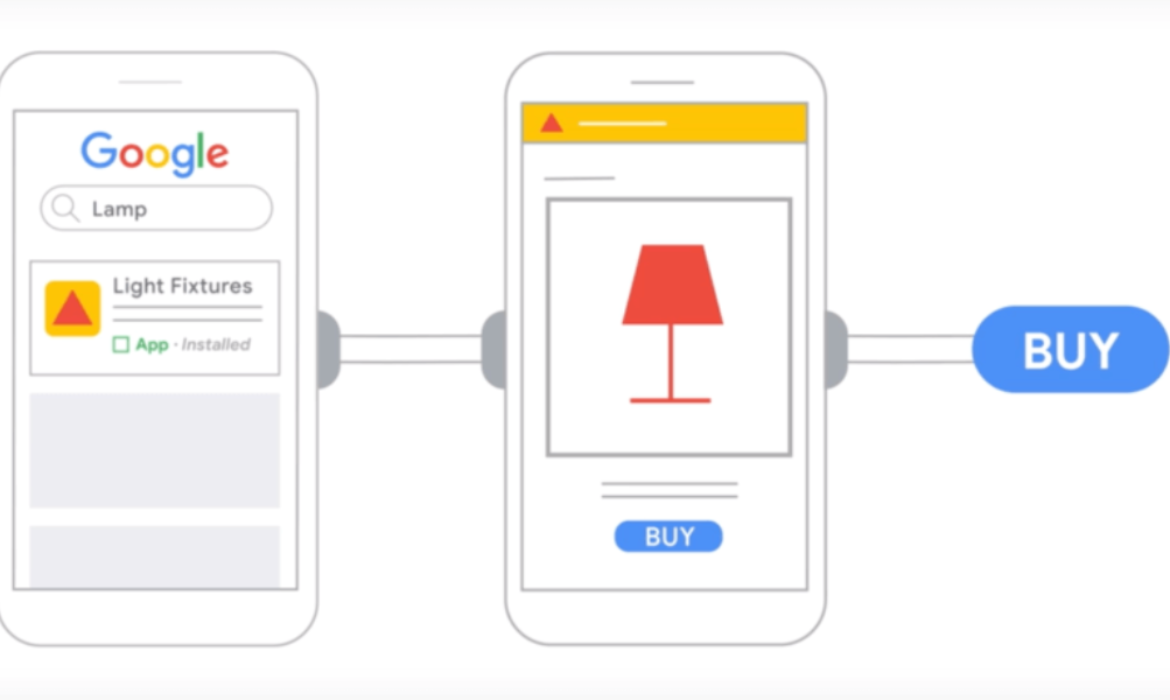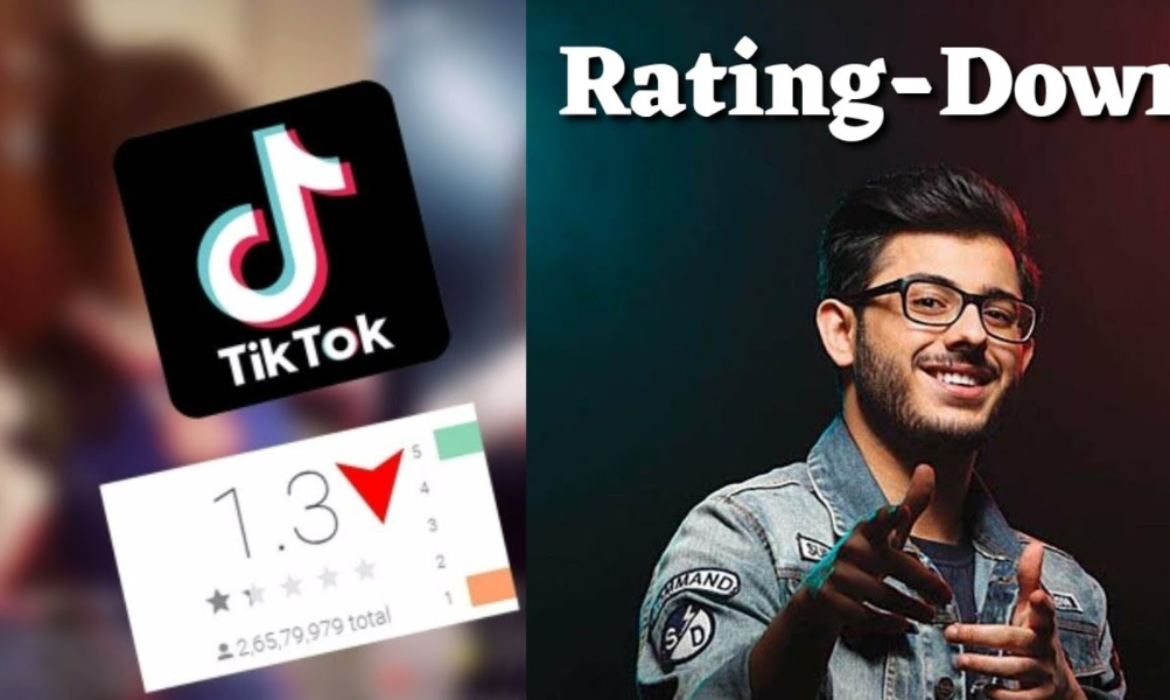A Glimpse At the Best YouTube Advertisements of 2023
In 2023, more people than ever before watched YouTube. Fans let their favorite musicians be the soundtrack to their life as they followed the hottest trends and creators. When sports fans tuned into NFL Sunday Ticket’s new location, they witnessed innovative new kinds of AI-powered creativity. In the realm of YouTube advertisements, culture and brands coexisted. With AI innovation driving growth on connected TVs (CTV) and YouTube Shorts, there seemed to be no end to the opportunities to engage with viewers. As the year draws to an end, let’s take a look back at the wide range of creative YouTube advertisement.
Storytelling on YouTube has no boundaries, as demonstrated by the abundance of brands that sprang to life in 2023 across a wide range of media and screens. Let’s start with the prominent advertisements. Pepsi, Louis Vuitton, and Apple advertisements have all been recognized by YouTube as the best of the past 12 months.
Apple: Study with Me
Actor Storm Reid appears in Apple’s 90-minute “Study With Me” film, which has received 18 million views. In the video, Reid uses a variety of Apple devices for the course and the Pomodoro technique to get the most out of her study time. The salient features of the content appear to be that it is both practical and celebrity-driven. However, it also corresponds with the key characteristics of “Study with Me” content.
Pepsi – Rise Up Baby
Pepsi used formats, durations, and styles in a very common way. It advertised multiple iterations of a music video for its marketing campaign called Rise Up Baby. In India, the advertisement proved to be extremely profitable, and Pepsi also conducted similar music-based campaigns in many regions.
The music video, which features Indian actor Ranveer Singh, music producer Tanishk Bagchi, and singer-songwriter Vishal Dadlani in a powerhouse song and dance performance, stays true to the brand’s enthusiastic ethos.
Louis Vuitton – fashion show
While this was going on, Louis Vuitton shared a whole 20-minute show to promote its Fall-Winter 2023 collection, winning over many celebs as well as fashionistas. The program, which embodies the “spirit of the inner child,” explores the effects of the digital age and common human experiences while showcasing nostalgic imagery. Throughout the 20-minute performance, Spanish singer-songwriter Rosalia lights up the stage and sets the tone for the runway.
Read More: A Lookback At the 5 Best Christmas Ad Campaigns of 2023
Qatar Airways – C.H.A.M.P.I.O.N.S
Over 23 million people have viewed Qatar Airways’ official FIFA World Cup song, which features DJ Rodge and Cheb Khaled and celebrates the love of football and the FIFA World Cup. Fans all over the world responded well to this catchy tune, which quickly gained popularity.
Skullcandy – Meet Rail® ANC
Skullcandy is a name that frequently appears on lists honoring the greatest YouTube advertisements, and this time was no exception. A great example of epic hype, on-brand references, and captivating storytelling that skillfully combines features and benefits is the “Meet Rail® ANC” clip. Furthermore, the soundtrack is excellent, but that is to be expected from an advertisement for headphones, isn’t it?
Christian Dior- Miss Dior
The Christian Dior Miss Dior advertisement, which has received over 108 million views, demonstrates the potency of a compelling story. Using her acting prowess, Natalie Portman tells a story of love while providing an insight into the attitudes and emotions that this fragrance seeks to evoke in the viewer. As smells cannot be shared via a screen, Dior’s messaging is effectively communicated through visual clues and storytelling.
Final Words
This year, brands were multifaceted and layered. Their tales were brought to life on YouTube in a variety of forms, lengths, genres, and tones, garnering millions of views and comments in the process. Every artistic decision exposed a distinct facet of the brand’s identity and mission. The effectiveness of these very visible video advertisements emphasizes how crucial it is to provide interesting, captivating, and shareable material to connect with viewers. To draw in viewers and bolster their brand’s visibility, advertisers need to make the most of creativity and innovation as YouTube grows into a major worldwide platform.
Read More: CGI Advertising: Pioneering Future of Marketing or Merely a Social Media Fad?
AudienceProject Partners with Microsoft Advertising; YouTube Delays Co-Viewing Measurement Plan
AudienceProject Partners with Microsoft Advertising
Research instruments and audience measurement services AudienceProject has reached a deal with Microsoft Advertising. The goal of the partnership is to give advertisers continuous and independent audience measurement. This is especially true for advertisers using Microsoft Platforms in the UK and Germany. The Danish software provider has extended its current programmatic advertising campaign audience measurement in Microsoft Advertising. It encompasses digital video, connected television, and Netflix commercials. This will assist in gaining knowledge about the frequency and reach of campaigns.
Privacy-first data matching
To optimize their media buying, advertisers can obtain insights about Microsoft Advertising alone or in conjunction with other channels like Facebook, Instagram, YouTube, and Amazon. “Privacy-first data matching” between Microsoft Advertising and AudienceProject enables the measurement. It is only being rolled out to the UK and Germany at first because the two companies are currently testing to make sure the integration and the resulting measurement meet a range of minimum standards for independent measurement. AudienceProject confirmed that as the service is extended globally, more nations—especially France—will follow.
Here’s what they said
Brian Meritam Larsen, vice president of partnerships at AudienceProject, said
We experience a high demand for independent measurement of campaigns bought through Microsoft Advertising – both alone and in combination with other channels. We are very pleased that we can now offer advertisers this, helping them get valuable insights for more efficient budget allocation.
Jason Gruber, senior director of business development at Microsoft Advertising, shared
We want to help advertisers reach audiences across screens with premium advertising. We are pleased to be collaborating with AudienceProject, as their audience measurement solution allows advertisers to better understand how effectively their ads are reaching their desired audiences.
Read More: Microsoft Advertising and Media.Monks Unlock New Opportunities in China
YouTube Postpone Co-Viewing Measurement Plan
The co-viewing ad measurement plans that YouTube had originally planned to implement in the first quarter of 2024 have been postponed. They are now anticipated for the upcoming fourth quarter. Initially, the video platform intended to begin measuring and accounting for multiple viewers in a household. They would do so by using its co-viewing metric. Although there has been strong resistance to the new measurement plans from ad buyers since their announcement last summer, YouTube intends to roll out co-viewing to provide advertisers with a more complete image of their audience on the platform. Some executives are dubious about how precisely co-viewing measurement will count viewers following the specifications of a campaign and how the adjustments will impact the cost of ads.
Agency executives’ views on co-viewing plans
Agency executives expressed their hope that YouTube would use the delay as an opportunity to improve its co-viewing measurement plans. Furthermore, they also hope it addresses some of their issues and shares more information about its methodology with ad buyers. Since YouTube announced in the summer that it would transact against self-reported co-viewing measurement figures, ad buyers have been against the platform’s co-viewing measurement plans. Advertisers can choose to transact against Comscore’s and Nielsen’s co-viewing measurement separately on YouTube.
Third-party measurement and co-viewing measurement launch
Prioritizing the global market launch of third-party measurement and co-viewing measurement validation ahead of the transaction start date is YouTube’s stated strategy. Additionally, some agency executives simply don’t trust co-viewing measurement in general. Measurement of co-viewing is not a precise science. It usually takes into account a panel of chosen audience members. It is then projected to the entire audience using a co-viewing factor (e.g., 1.6) that multiplies the number of impressions served by the average number of people who are probably watching on the opposite side of those impressions.
Squishy math
Even though the math is a little fuzzy, it has proven sufficient for gauging traditional TV advertisements. These are primarily assessed using broad age and gender categories. However, agency executives are unsure of how precisely co-viewing measurement will count. Or more accurately, not count viewers according to a campaign’s targeting parameters given the level of audience targeting that advertisers are used to on platforms like YouTube. In light of this, agency executives see YouTube’s postponement as a chance to review the proper way to account for co-viewing in streaming, not just on YouTube.
Read More: DoubleVerify Includes YouTube Shorts in its Brand Safety Measurement Expansion
YouTube & Music Industry Forge AI Alliance for Artist Protection
Artificial Intelligence (AI) is advancing more quickly than ever. Along the process, it is fostering innovation, igniting fresh perspectives, and even changing entire sectors. It is clear that YouTube aggressively accepts this technology with a persistent commitment to accountability at this pivotal juncture. Over 1.7 billion people have watched YouTube videos about generative AI so far in 2023. Neal Mohan, the CEO of YouTube, has underlined the necessity of carefully utilizing its potential. He also discussed the platform’s AI music guiding principles and his expectations for how the system will support artistic expression while safeguarding platform artists.
P1# Ethical Adoption with Strategic Collaborations
With its ability to bring together fans from all over the world, produce famous videos, and introduce new artists, YouTube has long been associated with music. Its collaboration with the music business resulted in the development of YouTube Music and YouTube Premium subscription services, novel international live-streaming abilities, and vigilant copyright protection for artists. Although it has long been connected to music and copyright protection, advances in generative AI have made content regulation more challenging than ever. By listening to an artificially-created cover of a well-known song, one may see how technology is developed. One can wonder if the original artist, the creator of the AI, or the data used to train the model should receive credit.
Millions of individuals are incorporating AI into their daily lives as a result of the rapid breakthroughs in the field. AI. As revolutionary new forms of creativity are unlocked by generative AI, YT, and its collaborators in the music business concur to expand on our long history of working together, appropriately embracing the quickly developing field. YouTube’s goal is to collaborate with the music business in order to foster creativity in a way that advances their shared goal of ethical innovation. Recently, YouTube developed a framework to innovate and protect artists’ work in collaboration with peers in the music industry like Universal Music Group. It unveiled Music AI Incubator, a platform designed to make use of this innovative field.
Read More: Google Rolls Out Advert Target Frequency For YouTube Campaigns
P2# Safeguarding and Amplifying Music Partner Opportunities
Working with the industry leader and tremendous talent roster of Universal Music Group, they are launching the program. YouTube will put together well-known artists from around the world to gain an understanding of generative AI trials and research. OneRepublic’s Ryan Tedder, a three-time Grammy Award winner for songwriting and production, Yo Gotti, a renowned rapper and philanthropist, and the estate of American musical legend Frank Sinatra are just a few examples of these luminaries. YT will be able to learn from these bright individuals as it conducts tests and research on generative AI.
The goal is to strike a balance between originality and protecting copyright ensuring artists are compensated for their labor. As AI encourages a new era of artistic expression, YT continues to uphold its tradition of protecting the creators’ work. Investment in content management tools like Content ID has helped the industry generate income, AI offers a chance to rethink these safeguards. Over the years, they have made large investments in the infrastructure. It aids in balancing the needs of copyright owners with those within the YouTube creative community.
P3# Elevating Trust in AI Advancements and Safety Measures
Years of policy development and trust building have put YT in a position to expand its protections to AI-generated material. They have established content policies and a reliable and secure organization that lead the industry. These are also being used as safeguards for AI. Current issues including misuse of trademarks and copyrights, false information, spam, and more could be made worse by generative AI systems. The use of Content ID policies, detection and enforcement systems, and other tools keep their platforms secure on the backend. They will be able to better safeguard their community of viewers, producers, artists, and songwriters.
Read More: Zoom Faces Backlash As Revised AI Policy Raise Privacy Issues
Harmonizing AI and artistry
In a separate article, Sir Lucian Grainge, Chairman and CEO of Universal Music Group, also discussed his views on AI in the music industry. Digital modification, which some people formerly viewed with skepticism, has given rise to unrestricted creativity. If the market finds the appropriate balance, Grainge believes that generative AI will have an even greater impact. AI is not devoid of its dangers. Additionally, the technology could misappropriate and impute an artist’s distinctive qualities. To guarantee the independence and recompense of artists, Grainge underlined the necessity for infrastructure, creative alliances, scalable distribution, and safeguards.
He stated in the blog:
Today, our partnership is building on that foundation with a shared commitment to lead responsibly, as outlined in YouTube’s AI principles, where Artificial Intelligence is built to empower human creativity, and not the other way around. AI will never replace human creativity because it will always lack the essential spark that drives the most talented artists to do their best work, which is intention. From Mozart to The Beatles to Taylor Swift, genius is never random.
This demonstrates how firmly YT believes in AI to revolutionize and reinvigorate creativity. The three guiding principles of YT’s CEO create a strong basis on which the entire industry may flourish and push the limits of what is artistically possible. As it continues to progress, content producers and marketers may now produce content of a better caliber while still upholding the integrity and authenticity of the original content creators. They’ve unlocked Pandora’s box AI to boost innovation globally. Furthermore, they are aware that the success of YT and its assurance of artificial intelligence depends on the success of its partners.
Read More: Saudi Arabia-UAE Join Global NVIDIA Chip Race Amid AI Scramble
On Connected TVs, YouTube Makes Its Ads More Shoppable!
YouTube makes its ads shoppable on Connected TV (CTV). The video action campaigns expansion to Connected TV will help advertisers reach more potential customers. Video action campaigns combine inventory from Google and YouTube video partners and now YouTube CTV. Advertisers can take advantage of YouTube on CTV to generate leads and conversions.
Romana Pawar, Director of Product Management for YouTube Ads said,
To help consumers more easily learn about the products and services they’re interested in, we’re making YouTube ads on connected TVs more shoppable.
She further added that the expansion is beneficial to the advertisers as well,
We’re expanding Video action campaigns to CTVs to help advertisers drive more online sales or generate leads, and grow their business.
Related Read: All You Need To Know About Connected TV Advertising!
Connected TV & Youtube Ads: How Does It Work?
Viewers can watch video action campaigns on TV, and a URL appears at the bottom of their screens that facilitate shopping. They can click on the URL to be whisked away directly to the brand’s website from their mobile or desktop without interrupting their viewing session.
On the advertisers’ side, they can measure the effectiveness of the campaign in real-time using Conversion Lift beta on user actions such as website visits, sign-ups, and purchases.
An internal study shows that in the U.S., over 120 million people streamed YouTube or YouTube TV on their TV screens in December 2020. Early studies indicate that more than 90% of conversions originating from CTV would not have been reachable from mobile and desktop devices. It is thus evident that “the living room is becoming an essential place for brands to attract new audiences.”
Video action campaigns are now available around the world through Google Ads.
Interesting Read: Trade Desk Partners With Samsung Ads For Programmatic CTV
YouTube Introduces New Audio Ads To Target Music Fans
In a bid to help brands grow further and better reach music fans on its platform, YouTube launches new audio ads and music lineups.
With people shelter-in-place due to pandemic and music concerts are closed, users are increasingly turning to YouTube to listen to a podcast while doing regular chores or working out while listening to albums. In an effort to adapt to this consumer behavior and monetize the moments on YouTube, the platform rolled out audio ads in beta.
The 15-second audio ads are now available to all advertisers globally via auction on Google Ads and Display Video 360 on a CPM basis with the same audience targeting options, bidding strategies and Brand Lift measurement capabilities, and brand safety features as YouTube video campaigns.
These ads won’t be audio-only but the audio soundtrack plays the lead role in delivering the brand message. The visual component is mainly a still image or basic animation. In the blog post, YouTube says the key that the audio message should carry is: “Think: If I close my eyes, I can still clearly understand what this ad is about.”
The company claims that in months of alpha testing,
“75% of audio ad campaigns on YouTube resulted in a significant lift in brand awareness.”
For instance, this Shutterfly Audio Ad resulted in a 14 percent lift in ad recall and a 2 percent lift in favorability among their target audience.
YouTube is also introducing dynamic music lineups that allow advertisers to target campaigns at collections of music channels on YouTube in the popular genre such as Latin, K-pop, country, rap, and hip-hop. Marketers can buy ads targeted by moods or interests like fitness or meditation. Let’s say if a brand prefers to run ads at any given moment, they can buy against the Top 100 — powered by YouTube Charts. In head-to-head competition with Spotify that pioneered in selling only audio-ads for years, YouTube expects the move to boost ad revenue that it generates from music on the platform.
In another blog post, Lyor Cohen, global head of music for YouTube, positioned the new ad push as an effort to help artists and record label partners earn more revenue from this new ad format. He further explained, more than 2 billion logged-in viewers are watching at least one music video each month whereas 60% of music consumption on YouTube happens on mobile devices,4 where background play is not available.
“Regardless of when and how people are tuning in, we have ways to help advertisers connect, even when they’re consuming music in the background. Now you can complement the moments your consumers are watching, by engaging them in moments when they’re listening, with newly announced audio ads.”
The blog reveals more than 50% of logged-in viewers consume more than 10 minutes of music content in a day. Though, video is still the main and largest category for YouTube: 85% of music consumption on the platform is in the foreground, Adam Stewart, YouTube’s VP of sales said the remaining 15% is a ripe market to tap for audio ads.
“We know being associated with this content works, and so it’s incumbent on us to create packaged opportunities for advertisers to get close to it in whatever format they want to work in, whether that be audio, video or both.”
The audio ad on YouTube follows another audio announcement from Google earlier this year in August as it launched programmatic audio in Ad manager.
Google Plans To Turn YouTube Into A E-commerce Giant
Google enters the e-commerce space and plans to turn YouTube into the shopping next shopping destination. Google might soon transform its video streaming platform Youtube into a new strong contender for e-commerce like Amazon and Alibaba. On recent call earnings, Google CEO Sundar Pichai said that the ‘unboxing’ videos could be turned into a massive shopping opportunity.
What’s The Plan
A Bloomberg report suggests that the world’s largest video platform has asked creators to use Youtube software to tag and track product features in their clips. The data will then be linked to analytics and shopping tools from parent Google. This means that whenever a user is watching a video and likes a certain product, they can easily buy it with a single click. Currently, the feature is testing with a limited number of video channels. The channel creators will have control over what products are displayed to avoid any unnecessary product placement in their content. As per Bloomberg reports. It is still unclear how Google will generate revenues from the sales but it has started offering subscriptions for the creators and takes a cut of 30% from those payments.
Integration With Shopify
Youtube is also testing the integration with Canadian e-commerce platform Shopify. The prospect of collaboration with the e-commerce giant could have a huge impact on the e-commerce world. It has serious potential to transform the e-commerce industry and experience by integrating the advertising process directly with sales. The time spent between a consumer seeing something that they like and buying it could be possibly reduced to the shortest duration.
The Covid E-commerce Revolution
According to Bloomberg Intelligence, the e-commerce retail market, excluding China, may grow to $2.8 trillion by 2025. Google has really not seen success in the e-commerce space much like Facebook and underdog Pinterest. The tech giant has instead focused on selling ads and sending users to other stores than selling themselves. This pandemic witnessed a boom in e-commerce with people staying at home and buying online. Facebook and Instagram have leveraged its social media platform as hotbeds for online shopping. The sales have soared in the past few months for Amazon and Facebook whereas Google watched from the sidelines. Google has not utilized Youtube optimally and this is a brilliant move to topple Amazon and Alibaba’s dominance. This also gives content creators an opportunity for more earnings. A win-win situation for both!
Read more: Google Agrees To Pay News Publishers $1 Billion For Their Content
YouTube Tests New Shoppable Video Ads Tools
Amid a pandemic that created havoc around the world that resulted in prolonged store closures. This has led brands to advertise their products online to drive sales as more people are online now. To make things easier for them, YouTube has introduced new direct response solutions that make video ads more shoppable, drive conversion, and automate content delivery across the platform.
The idea is to make video ads the new ‘storefront’ for the brands as an increasing number of brands are using video ads that connect them directly to customers. YouTube Ads director and product manager Nicky Rettke wrote in the blog post, “Last year, the number of active advertisers using TrueView for action grew over 260 percent.”
Increase in sales with Shoppable TrueView for action
In the new test, the eCommerce advertisers can show their products in their TrueView for action ads. When the user clicks on the expansion arrow, browsable product imagery appears below the video.

Image Credit: Search Engine Land
The advertisers are required to sync their Google Merchant Center feed to the video ads, expand their call-to-action button, and drive traffic to a specific product page. However, Facebook recently released “Shops” creates on platform storefronts but keep the users and transactions within Facebook.
Retailer Aerie used Shoppable TrueView for action to increase awareness and sales for its 2020 Spring campaign and saw a 25% higher return on ad spend than the previous year and nine times more conversions compared to their traditional media mix. Rettke said in the post that 70% of people bought a brand after seeing it on YouTube.
Video Campaigns drive conversions
The next tool announced is ‘Video campaigns’, a cost-effective way to drive conversions, boost web traffic, or generate leads across the platform. It automatically brings video ads to the YouTube home feed, watch pages, and Google video partners in one campaign as well as include any future inventory that becomes available like the What to Watch Next feed.

Image Credit: Google
YouTube tested the video ad campaign with a start-up Mos to help students raise funds for college to avoid debts. Rettke said in the blog post that it saw 30% more purchases at one-third of the cost of its previous ad spend.
Lead Generation to a Video campaign
The third tool is adding lead forms to a brand’s video ad campaign. Lead forms help advertisers reduce costs and obtain potential costumers. It appears below the video ad and asks the viewers to fill the form while the ad is running.

Image Credit: Google
Automobile giant Jeep tested this approach with its Korea branch and saw a 13-times increase in completed leads at an 84% lower cost per lead as well as generated more leads.
Finally, Google has included YouTube in the Google Ads attribution report that will help advertisers identify the maximum impact across YouTube, Search, and Shopping campaigns.
Shoppable Ads, a new focus for social media platforms
Shoppable ads also considered as direct-response ads have become a major focus of all social media platforms in the pandemic when ad sales went down. Facebook introduced shoppable ads on its platform and Instagram. Snapchat has in-app shopping whereas buy groceries without leaving Pinterest. Shoppable ads are also seen on Tik Tok.
DR ads have helped Facebook, Instagram, Snapchat to maintain profits, and CPM’s. As per Adexchanger reports, YouTube sales VP Adam Stewart said,
“YouTube storefront isn’t a traditional DR advertising product.YouTube has a bustling DR business, because it’s popular for app-install campaigns, especially with mobile gaming companies.”
Direct response advertising features will be the focus of YouTube’s NewFronts presentation to advertisers. As a part of YouTube’s pitch, Stewart said the storefront isn’t meant to rival Facebook-Instagram or Snapchat commerce offerings but its natural counterpart is television.
Google’s Native Advertising Solution- Discovery Competes With Facebook

Discovery ads for the UGG brand cover Discovery feed, Gmail, and Youtube.
Image credit: Google
Key Insights:
- Google is positioning Discovery ads as a better way to reach online shoppers.
- 86% of online consumers are on a lookout for shopping ideas as they watch videos or content across the web.
- 90% of users discover new products and brands on YouTube Watch Next.
- Discover reaches hundreds of millions of consumers using the Google Search App.
- One campaign overs three giant Google products- Discovery Feed, Gmail, and Youtube.
Last May, Google announced at Google Marketing Live that ads are coming to discover. As a part of that, the Google Discovery ads were previewed for the Android and iOS feed, as well as Gmail and YouTube, and they are now finally rolled out to all advertisers globally last month.
With a single campaign, advertisers can reach 2.9 billion users across multiple Google surfaces- YouTube Home and Watch Next feeds, Discover feed on the Google Search app, and in Gmail Promotion and Social tabs. This approach to audience totals is similar to Facebook who started reporting usage across its ‘family of apps’ last year. Facebook reported 2.99 billion monthly active people (MAP) as of March 31. In simple words, Google is offering reach on par with Facebook.
All ads feature visual-rich product photography and are labelled.
- YouTube: Ads include an interactive carousel format and appear as users scroll through the Home and Up next feed while looking for new videos.
- Discover: Ads appear along with sports and personalized updates. The feed is available on Android, iOS app, and mobile web at google.com.
- Gmail: As per Google, ‘time offer’ appears as shoppers are checking the latest product deals in the Promotion tab of their inbox and are marked with a green badge that appears on the top of the feed like an email.
Unlike search ads, no need to type the query manually but Google is leveraging its understanding of what customers are interested in.
Thanks to Google’s unique understanding of customer intent, you’ll be able to show more relevant, meaningful ads to people when they’re most interested and ready to learn more about your products and services.
Why should Advertisers use Discovery
Google recommends for advertisers looking for:
- Drive conversions with their media
- Reach new customers with their media.
- Reconnect with their valuable customers.
Early Adopters of Discovery Ads
Early adopters like Deckers, iProspect, and M&M Direct have seen excellent results-driving customer action with Discovery ads alongside their existing media.
Lifestyle apparel brand Deckers worked with digital agency Jellyfish to promote the UGG brand’s 2019 holiday guide using Discovery ads. Deckers used repurposed high-quality images from its social campaigns and saw a revenue return of 10 times of its original ad spend. It plans to implement Discovery ads across the rest of its portfolio including HOKA and Teva.
Michelle Hernandez, senior manager of Omni-digital marketing at Deckers said,
“While Discovery ads don’t appear on social platforms per se, they offer rich, visually engaging experiences filled with meaningful content that excites and inspires consumers as they scroll through new content on YouTube, Discover and Gmail. This is where more and more consumers are engaged and spending time.”

Head of Acquisition, MandM Direct on Discovery Ads
Image Credit: Google
In early 2019, digital marketing agency iProspect tested Discovery ads with several large clients and reported a reduction up to 48% in cost per action compared to social ads.
iProspect senior director of paid search Christina Malcolm said, “We’re finding that Discovery ads are an interesting ad type that blurs the lines between traditional search, display, and social activations, but which can target different audiences and hit conversion performance goals.”
If you have failed to notice the Discovery ads in the feed yet, then that’s because Google is treading lightly. Currently, there is only one ad slot – in position three-on the Discover feed as Google is aiming high-quality bar and only showing the ads with best image assets that are relevant to users. However, the company also confirmed that more ads are likely to be rolled out.
How to get started with Discovery campaigns

Image Credit: Search Engine Land
Discovery ads are set up in Discovery campaigns with two ad formats: Discovery carousel ads with multiple images and Discovery ads with a single image.
Image Assets: Google scans your website for images that meet the size requirement, upload images, or select from the Shuttershock library. The key is to have high-quality images.
Headlines and Description: Discovery ads serve a combination of headlines and descriptions automatically. One can enter up to 5 headlines and 5 descriptions.
Geographical Targeting: Google shows a weekly impression estimate based on geographical targeting.
Call To Action Option: Google can automatically choose the call-to-action text in your ads or there are 10 other options such as ‘Apply Now’, ‘Shop Now’, and more available to choose from.
Finally, Discovery ad campaigns can be targeted by location, audience, or demographics. This is Google’s automated universal campaign and smart bidding is required. In its Discovery ads tips page, Google notes that advertisers should “Choose an average daily budget at least 10 times the value of your target cost-per-action (CPA) bid and wait for at least 40 conversions before making changes to your campaign.”
Read more: Every 2020 Google SERP Feature Explained: A Visual Guide
CarryMinati Effect Continues To Haunt TikTok Ratings.
Quite recently, the TikTok rating has taken a deep dip on Google play store. This happened after millions of its users starting filing reports and providing poor rating to the application.
Currently, TikTok claims to have around 200 million users in India. TikTok states that around 120 million of the users are active on the application.
A report by SenseTower in September 2019 stated that around 60 million people downloaded TikTok in a single month. This number sets a record of the maximum number of downloads.

Image credit – Sensor report.
Around 40% of this share was contributed by Indians.
So, What exactly went wrong? Why all of a sudden TikTok rating fell on Google Play store?
The rage against TikTok started when a meme started surfacing on the internet. The meme showed a statement released by the owner and CEO of TikTok, Kevin Mayer stated the following:
“I created the TikTok for jobless people, I didn’t know India had so many of them.”
Image credit – Twitter
All social media platforms started flooding with meme templates portraying the statement. Several people across India started requesting people to ban the use of TikTok. #bycottTikTok started trending on Twitter.

Image Credit – Twitter.
Since no authenticity of this news was proved, TikTok had not suffered much damage to its userbase. Still, there was a division in society who wanted this software to banned in India.
However, people soon got the opportunity to express their anger for this platform. A certain Group on TikTok community calling themselves “Nawabs” started a dispute by stating that people on TikTok are more hard-working and efficient than people on YouTube. They also stated that TikTok is a better platform for video upload.

Image Credit – Techbugs
To provoke the debate, TikTok star (Amir Siddiqui) created a YouTube video. He named this video as TikTok vs YouTube and asked YouTubers to step up to this war.
This started a speech war between this group on TikTok and a few people on YouTube.
They started mocking each other in their videos. Elvis Yadav was the first YouTuber to step up to the challenge.
Soon another video surfaced on YouTube made by a YouTuber named CarryMinati(Ajey Nagar). In this video, the YouTube channel host used a lot of creative ways to defame TikTok star Amir Siddique and his fellow group members. The video received a great response from his viewers and people started sharing it across other social networking platforms.
Also, people started creating memes on TikTok star Amir, to show their support for YouTubers and CarryMinati.

Image credit – StrictlyForMen.
In just four to five days this video by CarryMinati gained a lot of popularity on the internet. It became the most viewed video in India. However, YouTube decided to bring down the video as the content of the video was reported to be filled with profanity and hate speeches.
The video was still increasing in its views and likes and sudden removal of it from YouTube started a whole new revolution. People started reporting TikTok on their mobile phones and requested others to do the same.
Many fellow YouTubers and Bollywood celebrities showed their support towards CarryMinati and started uninstalling TikTok from their phone devices.

Image credit – Instagram
Within days, millions of users reported TikTok. They started rating it with 1-star reviews. This resulted in the downfall of TikTok rating from 4.6 to 1.2 on Google play store. Recently Google deleted around 1.5 million reviews and comments from TikTok.

Image credit – Republicworld
While all this was going on, another video surfaced on the TikTok.
This video was made by Faisal Siddiqui brother of Amir Siddiqui. In this video, Faisal can be seen throwing a liquid substance on a girl’s face. Reportedly he was supporting acid attacks on females.
This video was reported to the authorities and the National Commission for Women filed a complaint against the user with TikTok.
After this incident, TikTok banned the accounts of Faisal and Amir Siddiqui. Both are brothers and member of Nawab community on TikTok. Even before these incidents, several complaints were filed against them for spreading hate speech via their videos. Millions of people were following their accounts on this platform.
According to TikTok Asia-Pacific office, they don’t allow any such content which is a threat to the security of an Individual. Their policies are strict against Physical harm of violence against women.
However, so many other cases have been reported earlier well where TikTok has been reported to spread hate speeches in the community or religion.
Tik Tok Tests ‘Shop Now’ Button For Influencer Videos
TikTok, mostly considered as an entertainment platform is improving its advertising offerings and nascent Creator Marketplace that matches advertisers with vetted publishers and influencers. DigiDay reported that TikTok is testing a new ad format namely the ‘Shop Now’ button. This would link brands to the leading influencers allowing the creators to display the Call-To-Action button in their videos. The ad revenue will be divided between TikTok and influencers.
The revenue split ratio is not decided yet but DigiDay reported that the company is discussing 20/80 splits in Tik Tok’s favor. This model allows TikTok to tap into revenue that was previously shared between advertisers and influencers.
Can you shop on TikTok?
The Shop Now option influences the user to shop the product right away is one way of having both – performance and direct response ad products. The creator CTA feature is still in the early testing stage and is available to only select advertisers and agencies.
As quoted by DigiDay, a TikTok spokeswoman,
“We are constantly experimenting with ideas and features to improve the app experience for our users. TikTok is a platform for creative expression and a big part of that is showing and sharing the things you love with others. We’re in the early stages of testing a way users can add links to products to their videos and will share more updates when we have them.”
Earlier this month we witnessed Levi’s was among the first brands to partner with Tik Tok’s influencers and trial the Shop Now’ program. It partnered with the influencers to promote its “Future Finish” customizable denim technology on the platform.
Levi’s reported the product views doubled on the ‘Future Finish’ page that featured in the campaign. All advertisers can access to ‘Shop Now’ button to help drive traffic to their websites but is different from the CTA Beta test said TikTok spokesperson to DigiDay.
Is TikTok following the YouTube way?
TikTok has increased its focus on Creators and for this, it had launched Creators Marketplace late last year. The Creators marketplace helps advertisers to filter out the platform’s top creators.
It appears that TikTok is moving towards YouTube Creator shared revenue model than the Instagram model. Amy Luca, chief executive at influencer marketing company TheAmplify said,
One of the things that Instagram struggles with is retrofitting some of their programs to pull out money from the gray market ecosystem that is being earned by influencers and paid by brands on their platform.”
Growing users of the social video app
TikTok has been growing rapidly over the past year and has been on a tear since the lockdown. Data company Apptopia estimates TikTok was the second top free app on iOs and Google Play stores in the U.S. on April 28. It is also estimated to have 328 monthly active users and was downloaded 100 million times worldwide between Mar 20 through April 28.
Jude Rajanathan, a global director at media agency Zenith stated that TikTok will work on improving its CTA buttons to push for more performances and direct-response ads.

